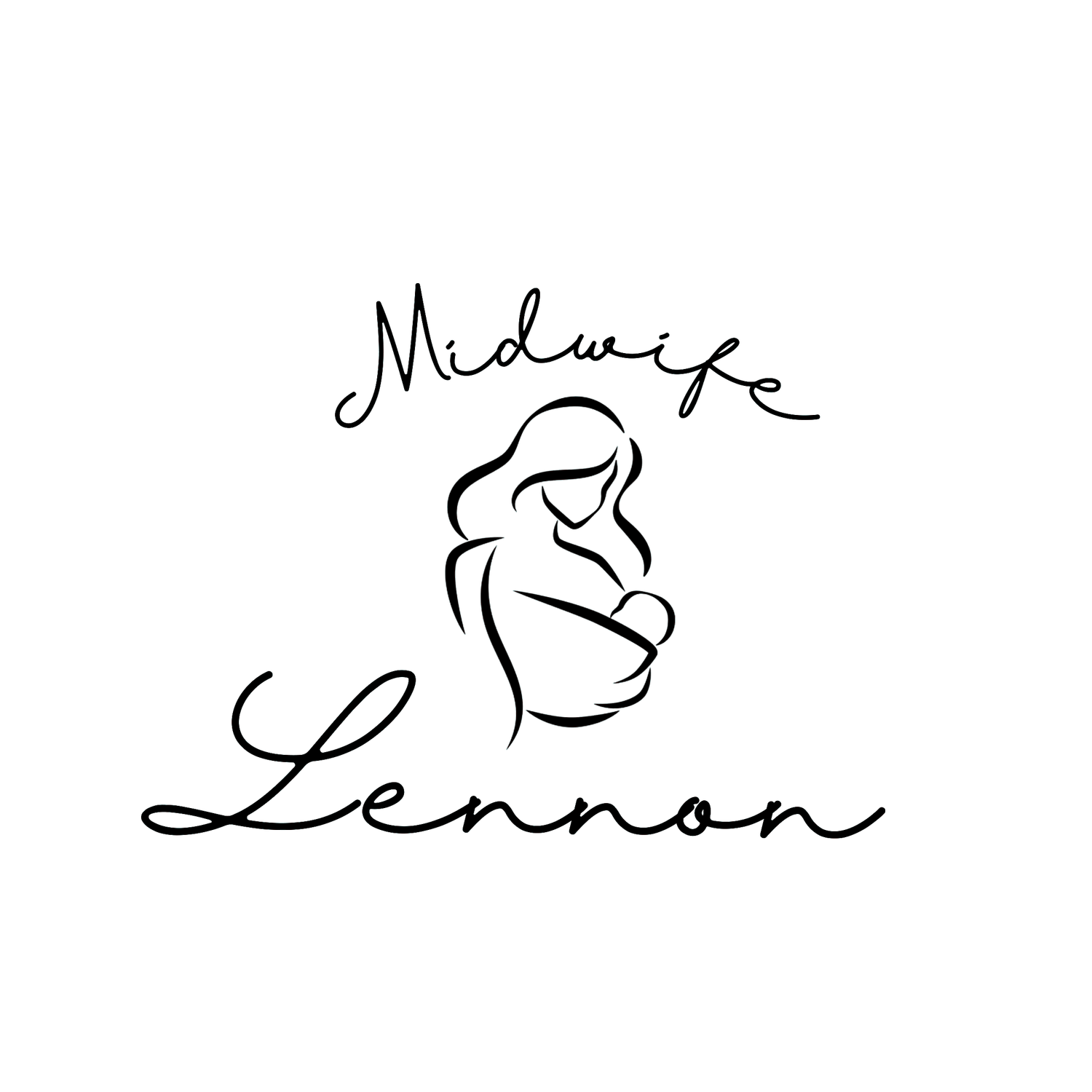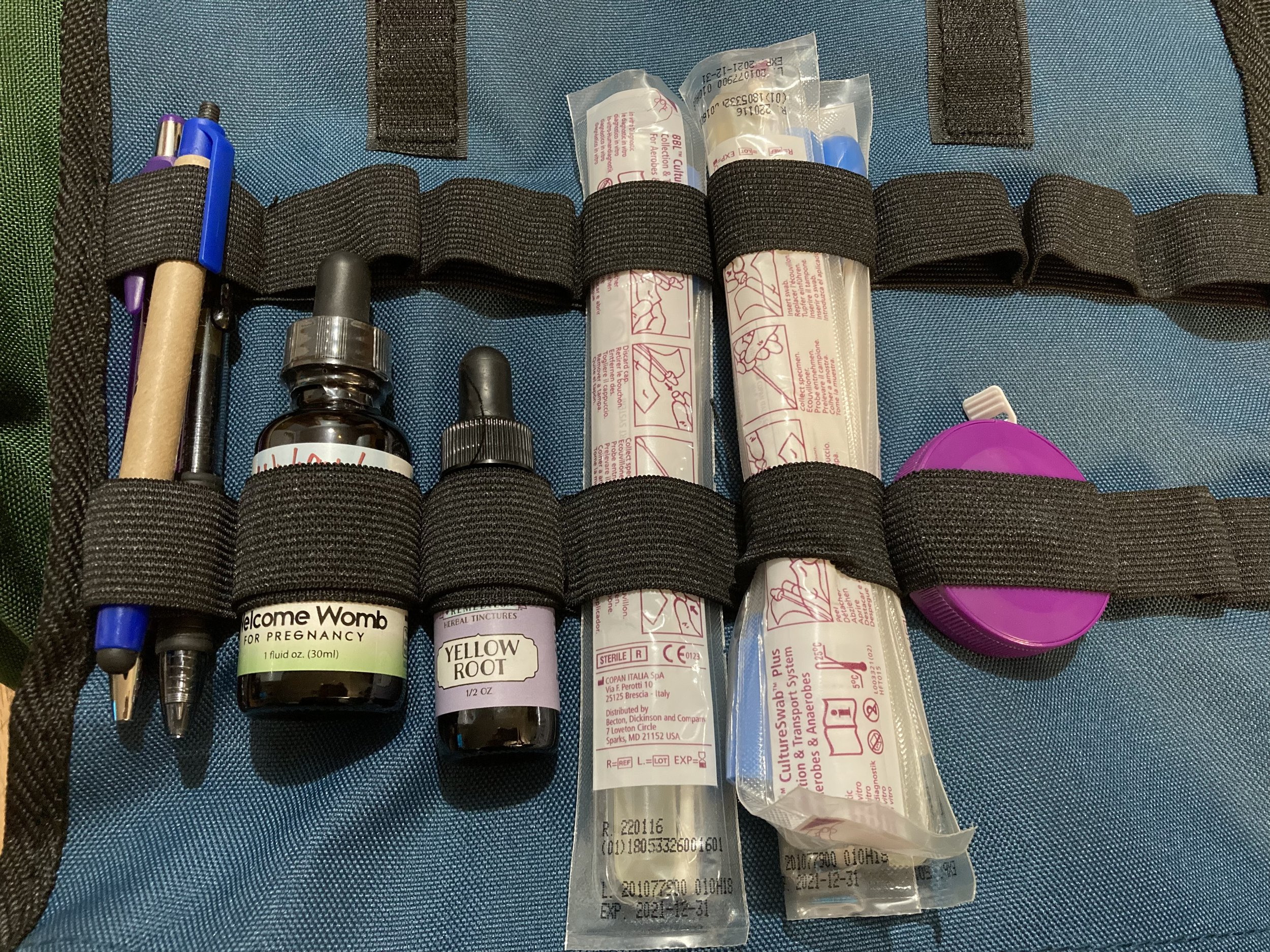A Peek Into My Prenatal Bag
Have you ever wondered what your midwife carries in her bags? Well, the answer is unique to each midwife, though many do likely have much of the same items. I thought I’d spend some time sharing the contents of mine. Over the next few weeks, I’ll be sharing all of the things that I have with me when I’m seeing mothers prenatally, at a birth, or doing a postpartum visit.
This is the bag that I carry with me to all of my prenatal and postpartum appointments. It is the blue bag that you see here. It is also with me at births. I do all in-home care, so that impacts what I carry. I recently changed bags as my old prenatal bag wasn’t working for me any longer. I had added a few items and it just didn’t all fit. I was reluctant to replace it as it had been my prenatal bag since I was a student midwife. That would have made it about thirteen years old! So, it was a big deal that I changed prenatal bags.
(Birth bags is another story. I’ve changed birth bags countless times over the years. More about that in a later post.)
What is important to me in a bag is being able to keep things organized and visible. I need space for all of the things I like to have with me. The only thing that isn’t in this bag that I may need is my blood draw bag and scale. I don’t use it at every visit, so I’ve decided to just keep it in my car for the occasional time I need it.
Along with my blood draw bag and scale that I keep in small zippered bag in my car, I have some homeopathic reference books that I like to have on hand for births, a notebook with lap requisition forms, some handouts that I give to everyone in paper format, and lab pricing documents.
Now onto the photos!
I have two different sized blood pressure cuffs. Did you know the proper name is a sphygmomanometer? (Try saying that fast five times. 😜) I carry two different sizes because it is very important to use the correct size for the arm, or the blood pressure reading is inaccurate. Next to my cuffs is my adult stethoscope. I use it mostly for blood pressure readings.
Next we have my favorites: fetoscopes! Fetoscopes are my default method for listening to baby’s heart rate prenatally. I can usually hear baby with a fetoscope between 18-22 weeks, sometimes as early as 16 weeks. It can take parents a few weeks longer to hear, though, usually about 24-28 weeks. Fetoscopes take experience and practice to use. The more you use one, the easier it is to hear with one. I own three types of fetoscopes. From left to right, there is a pinard horn, a Allen style fetoscope and a Leff fetoscope. Pinard horns are more commonly used by midwives in the UK. I like them, but it is impossible for the mother to hear with them since there is no long tubing. The black Allen style fetoscope is the one you’ll see me use the most often. I own quite a few of them as I loan them out to parents to use at home once they are able to hear the heartbeat with it. The Leff fetoscope on the far right is a new addition to my bag. They aren’t being made anymore and when they were, they were very expensive, so I never managed to buy one. Earlier this year, I managed to buy one used. A rare find! I’m still getting to know the Leff, but I’m very excited to have one finally. It is the heaviest item in my bag, though.
I have an assortment of items in this photo. From the top left, going clockwise, there are disposable cups and urine dipsticks for checking urine, a spare chux pad (mostly carried in case I do a blood draw), a amnicator (used for testing the ph of fluid in cases of a suspected amniotic bag leak), lab specimen bags, a Doppler and gel, a thermometer, a bag with gloves and gauze, and an automatic wrist blood pressure cuff.
Next up are items in my side pockets. There is a bag with spare batteries and a charger, watercolor crayons for doing a belly draw, and glucometers for checking blood glucose levels at home.
Here I have pens, some herbal tinctures (welcome womb for a threatened miscarriage and yellow dock for herbal iron, in case anyone wants to use it), swabs for GBS screening, and a tape measure used to measure fundal height.
The last items: a very thin homeopathic reference book for midwives, gestational wheels (used to calculate due dates), and instructions for mothers for when they have an ultrasound ordered.
There you have it! I’m happy to answer any questions you may have below in the comments. Next up will be my birth bag! 😍








